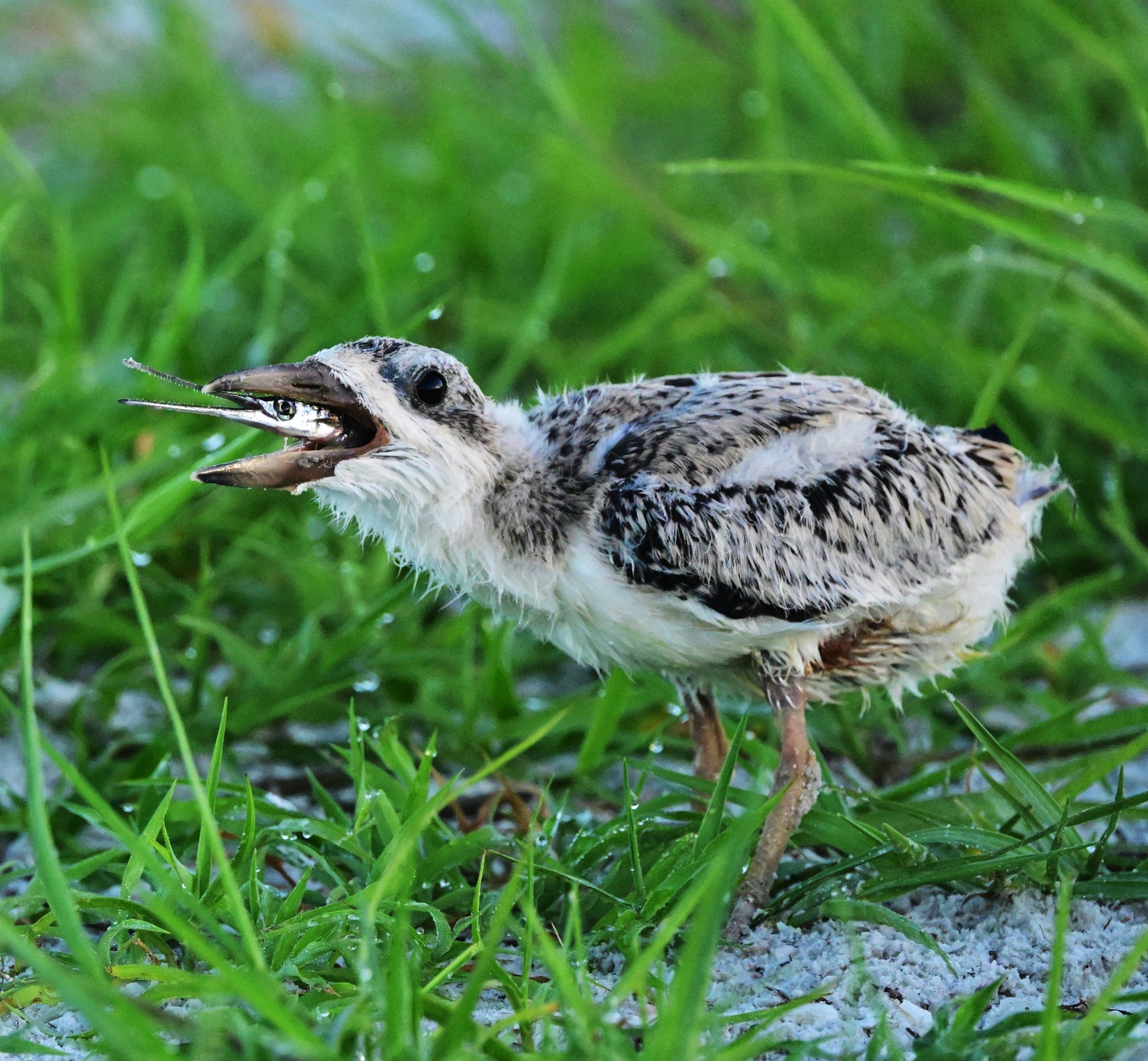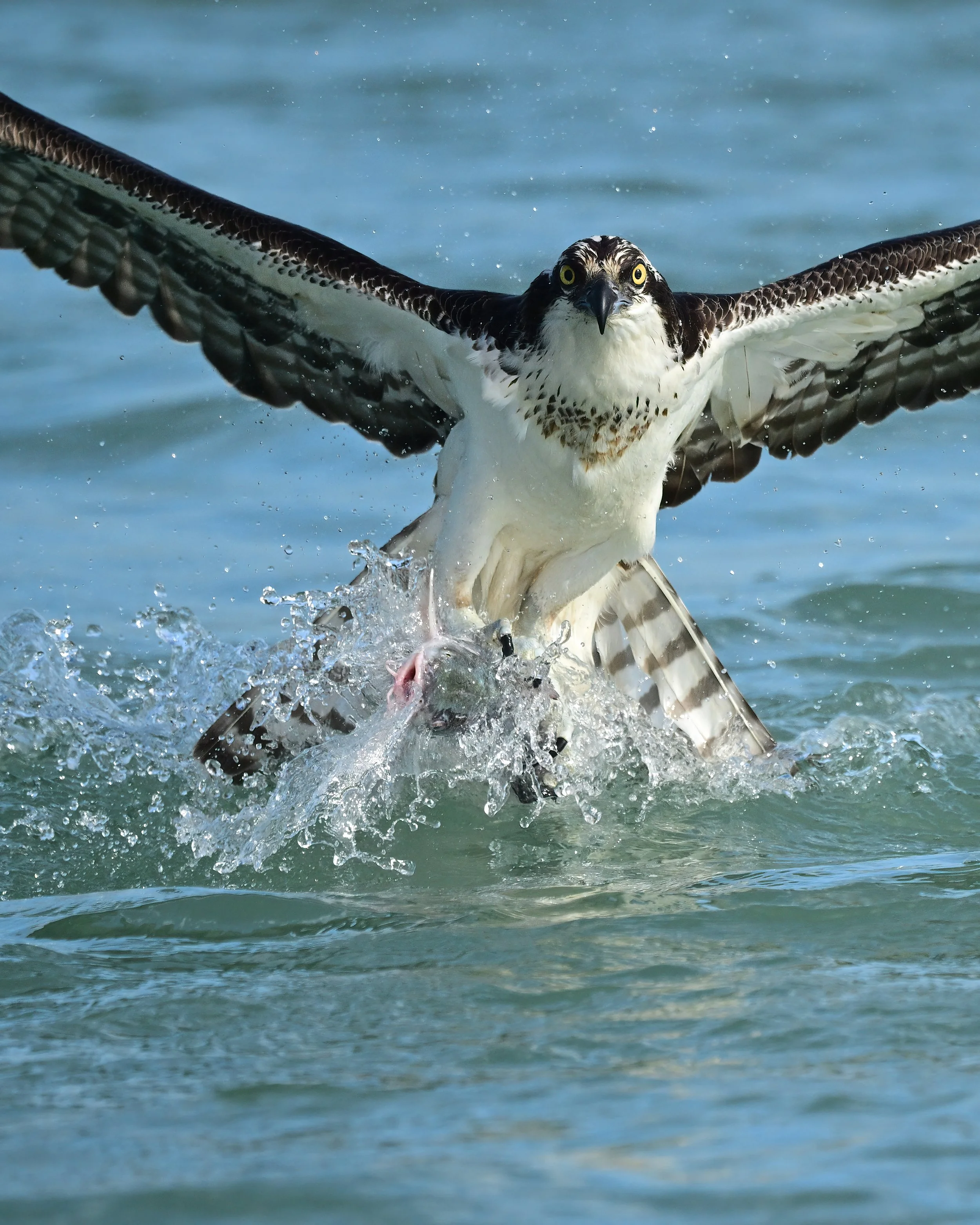8x10 photo of a black skimmer with a fish
The black skimmer (Rynchops niger) is a distinctive and fascinating bird known for its unique feeding habits and striking appearance. Here are some key details about the black skimmer:
Appearance:
Bill: The most defining characteristic of the black skimmer is its long, slender bill. The lower mandible is significantly longer than the upper mandible, allowing it to skim along the surface of the water while feeding.
Plumage: They have a black upper body and white underparts, with striking orange to red beaks and long, pointed wings. Their legs are typically yellow-orange.
Size: Adult black skimmers are medium-sized, measuring about 38-43 cm (15-17 inches) in length with a wingspan of approximately 100–110 cm (39–43 inches).
Habitat:
Black skimmers are typically found along coastlines, estuaries, and large rivers. They prefer sandy or gravelly beaches for nesting and are commonly seen in flocks near water bodies.
Feeding Behavior:
Black skimmers feed by flying just above the water's surface and using their specialized bill to skim the water and catch small fish, crustaceans, and other aquatic prey. The unique shape of their bill allows them to sense their prey as they skim, making them effective hunters.
Breeding:
These birds are monogamous for a breeding season and often nest in colonies. They typically lay 3-5 eggs in shallow scrapes on sandy beaches. Both parents take turns incubating the eggs and caring for the chicks.
The black skimmer (Rynchops niger) is a distinctive and fascinating bird known for its unique feeding habits and striking appearance. Here are some key details about the black skimmer:
Appearance:
Bill: The most defining characteristic of the black skimmer is its long, slender bill. The lower mandible is significantly longer than the upper mandible, allowing it to skim along the surface of the water while feeding.
Plumage: They have a black upper body and white underparts, with striking orange to red beaks and long, pointed wings. Their legs are typically yellow-orange.
Size: Adult black skimmers are medium-sized, measuring about 38-43 cm (15-17 inches) in length with a wingspan of approximately 100–110 cm (39–43 inches).
Habitat:
Black skimmers are typically found along coastlines, estuaries, and large rivers. They prefer sandy or gravelly beaches for nesting and are commonly seen in flocks near water bodies.
Feeding Behavior:
Black skimmers feed by flying just above the water's surface and using their specialized bill to skim the water and catch small fish, crustaceans, and other aquatic prey. The unique shape of their bill allows them to sense their prey as they skim, making them effective hunters.
Breeding:
These birds are monogamous for a breeding season and often nest in colonies. They typically lay 3-5 eggs in shallow scrapes on sandy beaches. Both parents take turns incubating the eggs and caring for the chicks.
The black skimmer (Rynchops niger) is a distinctive and fascinating bird known for its unique feeding habits and striking appearance. Here are some key details about the black skimmer:
Appearance:
Bill: The most defining characteristic of the black skimmer is its long, slender bill. The lower mandible is significantly longer than the upper mandible, allowing it to skim along the surface of the water while feeding.
Plumage: They have a black upper body and white underparts, with striking orange to red beaks and long, pointed wings. Their legs are typically yellow-orange.
Size: Adult black skimmers are medium-sized, measuring about 38-43 cm (15-17 inches) in length with a wingspan of approximately 100–110 cm (39–43 inches).
Habitat:
Black skimmers are typically found along coastlines, estuaries, and large rivers. They prefer sandy or gravelly beaches for nesting and are commonly seen in flocks near water bodies.
Feeding Behavior:
Black skimmers feed by flying just above the water's surface and using their specialized bill to skim the water and catch small fish, crustaceans, and other aquatic prey. The unique shape of their bill allows them to sense their prey as they skim, making them effective hunters.
Breeding:
These birds are monogamous for a breeding season and often nest in colonies. They typically lay 3-5 eggs in shallow scrapes on sandy beaches. Both parents take turns incubating the eggs and caring for the chicks.









